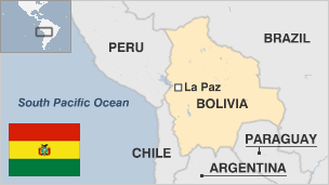
Facts and stats about Bolivia
Bolivia is a landlocked country in South America. It was under the Spanish administration since the 16th century, until movements for independence started under the leadership of Simon Bolivar (the name from which Bolivia was derived).
The attainment of independence by the country did not lead to a happy ending, though, as the country suffered from internal and external conflicts. This led to massive poverty and to the loss of important resource-rich territories to its neighboring states.
Early in the 20th century, silver became an important mineral for the country, pouring in much needed money to run the meager economy. However, it was a development felt only by the elite minority and the country’s poor majority continued to live deplorable lives. This fueled the rise of social unrest throughout the country which, in turn, resulted in a series of coups and counter-coups during the 1980s.
The country has an economic growth rate of 5% yearly. While it may sound impressive, World Bank actually considers Bolivia to be ‘Repressed.’ So much needs to be done in order to reduce the vast poverty problem of the country.
It was revealed that Bolivia has rich Lithium deposits which accounts to more than half of the overall Lithium proven deposits all over the world. However, the Bolivian government is not very keen to tap this economic game-changer because the Lithium deposits lie on the salt flats – an area in Bolivia which boasts unique salt formations attracting tourists from all over the world annually.
- Agriculture 144
- Background 10
- Conflict 1
- Cost of living 53
- Crime 82
- Culture 22
- Disasters 3
- Economy 3080
- Education 647
- Energy 716
- Environment 234
- Geography 84
- Government 228
- Health 306
- Import 4
10.46 million
Population. Ranked 82nd in 2013.
$2,575.68
GDP per capita. Ranked 121st in 2012.

1.08 million sq km
Sq. km. Ranked 26th in 2008.